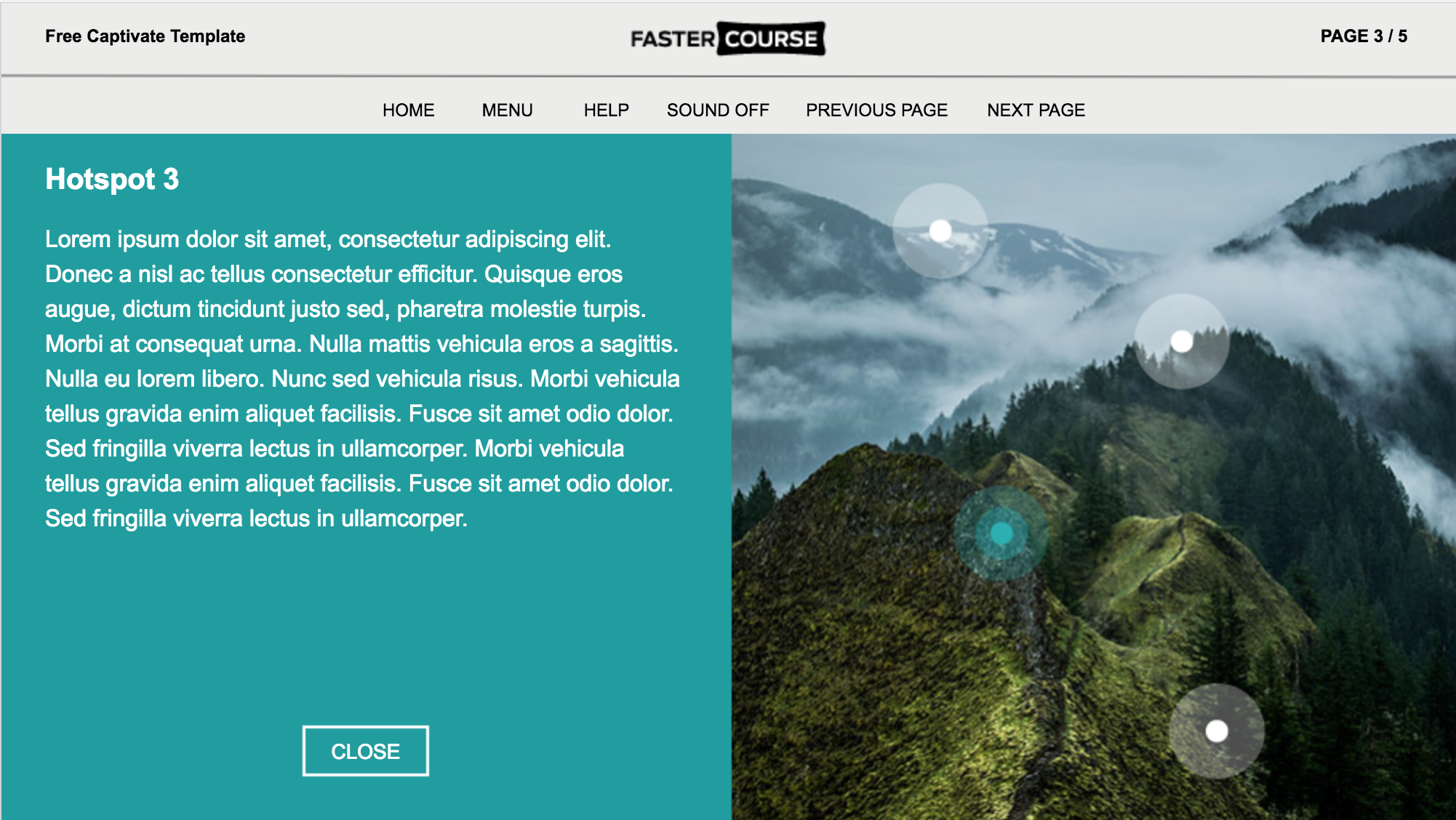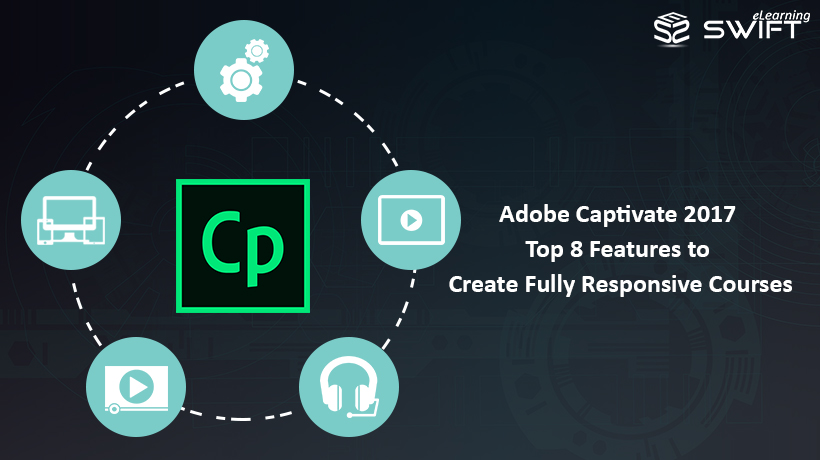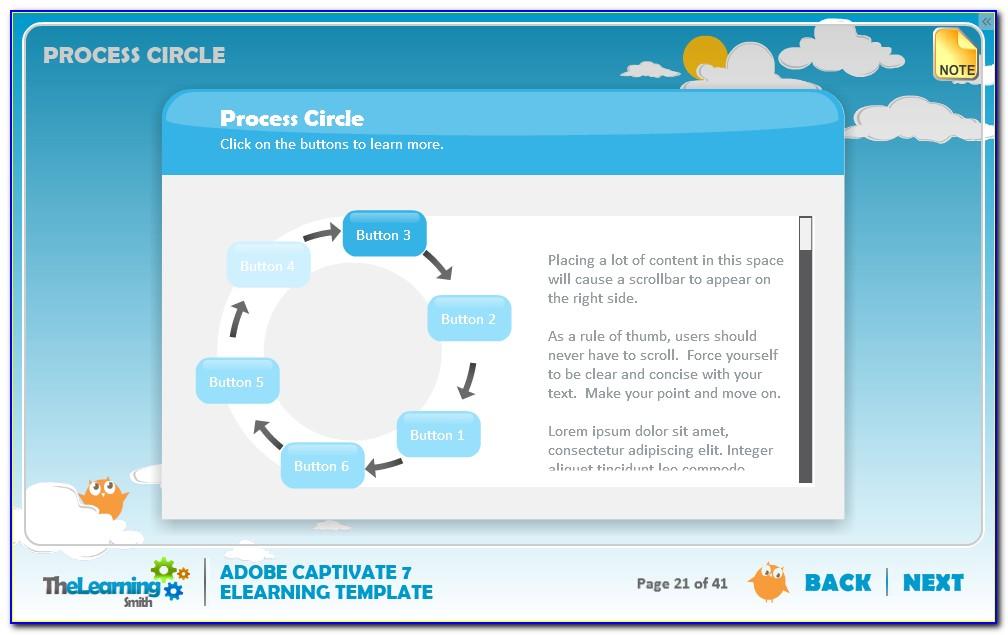

- #Adobe captivate elearning examples for free
- #Adobe captivate elearning examples how to
- #Adobe captivate elearning examples software
- #Adobe captivate elearning examples professional
- #Adobe captivate elearning examples download
Examples of standard actions for Captivate projects.

#Adobe captivate elearning examples software
#Adobe captivate elearning examples how to
How to de-construct a finished captivate project.cptx.A collection of practical tips for Captivate projects.cptx.A collection of customised interactions for Captivate projects.cptx.A collection of SVG icons for Captivate projects.cptx.A collection of editable icons for Captivate projects.ppt.A collection of post-it or sticky notes for Captivate projects.cptx.A collection of navigation slides for Captivate projects.cptx.A collection of welcome slides for Captivate projects.cptx.Introduction to ICE (In Case of Emergency).cptx.
#Adobe captivate elearning examples download
All the links to the files listed below are available on my blog ( and mirrored at ), where you will be redirected to OneDrive to download them using a modern browser. In chronological order this is the list of my projects. You can use them to develop your own projects, apply your own themes, use them as an educational resource, improve the content, expand on the examples or adapt the projects for your own personal use.

These Captivate project (cptx) files can be used for personal and educational use only.
#Adobe captivate elearning examples for free
I have now decided to release these projects for free to the public with the hope that it may just benefit one person new to learning Adobe Captivate, because I can appreciate the overwhelming battle of learning this authoring tool myself.
#Adobe captivate elearning examples professional
From my DOS-past I have kept the routine to make the first 8 characters to be significant.Are you new to developing courses in Adobe Captivate and need sample files to start building Adobe Captivate projects? As a L&D professional, I taught myself Adobe Captivate as a professional development activity with the primary goal of learning the various features of the program to develop e-learning projects in the workplace. Maybe I should offer some tips in a new blog? Just one: do not use very long names (QSP in the new version are a bad example, names are very long), because in some dropdown lists you’ll see only the first part. I have somewhere an old blog about naming. Whenever I coach a group training in a company, I suggest the trainees to collaborate in setting up a good naming convention to which everyone agrees. I have a personal naming convention, but this is my choice. eLearning Brothers is a great resource for instructional designers to access graphics and templates. However, except for some exceptional situations (like states) the global rule in Captivate is that each item needs to have a unique. See Adobe Captivate: Tips and Tricks for similar articles. Meanwhile this has changed, because you can use filtering (unknown by many developers). At that moment (CP4/5) it was meant to distinguish the user variables from the system variables, because the only way to find one in the dropdown list was using the first character. The convetion v_ originates in my early blog psots where I used this for variables. It sucks to sit scratching your head wondering what a particular variable does when troubleshooting. No right or wrong answer, really, but you should use something that makes sense to you as you work with them especially if you have to modify somewhere in the future. I will also sometimes use a “prefix” or “suffix’ like with varAnswer for a variable or unitsBtn for a button name and other times when I want to just keep things short I may go with something like a1, a2, a3, etc. If I have a button that closes my instruction panel, I might name it closeInstructions and that helps me as I talk through the logic of what I want to happen. I stay away from using any symbols or spaces in my naming.įor example, if I need a variable for tracking if all selections are correct, I might use checkCorrect as the variable name. Camel casing is when you capitalize the first letter of additional words as you will see in my examples. Personally, I tend to use names that accurately reflect what a variable or object is used for and where appropriate, use camel casing.


 0 kommentar(er)
0 kommentar(er)
